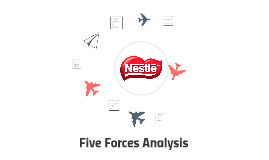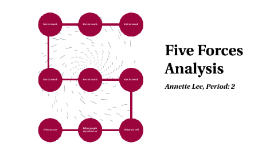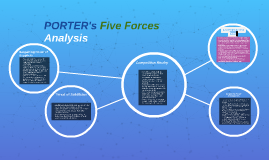PORTER's Five Forces Analysis
Transcript: Threat of Subtitutes Bargaining Power of Suppliers Threat of New Entry Bargaining Power of Customers Competition Rivalry Subtitutes products for the business are birthday cards, stamps, toys, candies and rings With specific materials and production methods our sourvenirs can be cheaper than other substitute products Most people search something which is not homemade, thus it is to find another different way that stregthen substitution At the Energy Hub, it will be competitively complex if other students who sale other merhandise and volunteer service have more members, better prices, and convenient products Competition will be diverse since usually the traders at the Energy Hub offer foods, electronics, club societies and luxury Informational complexity can be decreases with social network, team based supervision, and practical accounting Level of differentiation between traders is high but the maturity of the business is still as a rookie PORTER's Five Forces Analysis It is possible that our the number of our customers can be as much as those who usually go to a cafeteria. Because our sales of souvernir is at the Energy Hub, the volume of purchases on our business can be medium if some customers are college people who enjoy tourism We will arrange low to medium prices to customers due to limited resources and according to the situation with the customers If the majority of our customers are foreign students who enjoy tourism, their number can be 5 to 10 people every hour at the business It can be difficult to adjust selling terms if our customers (students or teachers) have some experience in haggiling the price At the Energy Hub, our customers are expected to be college students, office workers and instructors. Since our products are sourvenirs made of bottles and decoration, the supply must be from stores or supermarket These suppliers can have no direct relation to influence our prices since our business is informal as a simulation It will be costly to switch suppliers due their changes in availability in resources and prices Since there are many stores around Sunway resort to to choose for our products, we will need each of their help not too frequently. Thus they cannot often dictate prices powerfully Capital requirement depends on the situation and must be organized with serious caution due to limited budget If one of the other groups from the class enters selling of similiar products, it increases the intensity of competition but it can costly for that other group if we have superior readiness In proprietary product differences, our products are designed to be simple, low cost, decorative easy to produce, in the form of a decorated bottle as a gift and memento Resources remain scarce during the start of the business and until profit is sufficient and establised relation with reliable suppliers. This is directly related with the amount of bubget and supply choices Cost advantages depends easy access to specific materials and production methods Access to distribution depends on availability of transportation, effeciency of advertisement and commercial nature of the location for sales

















